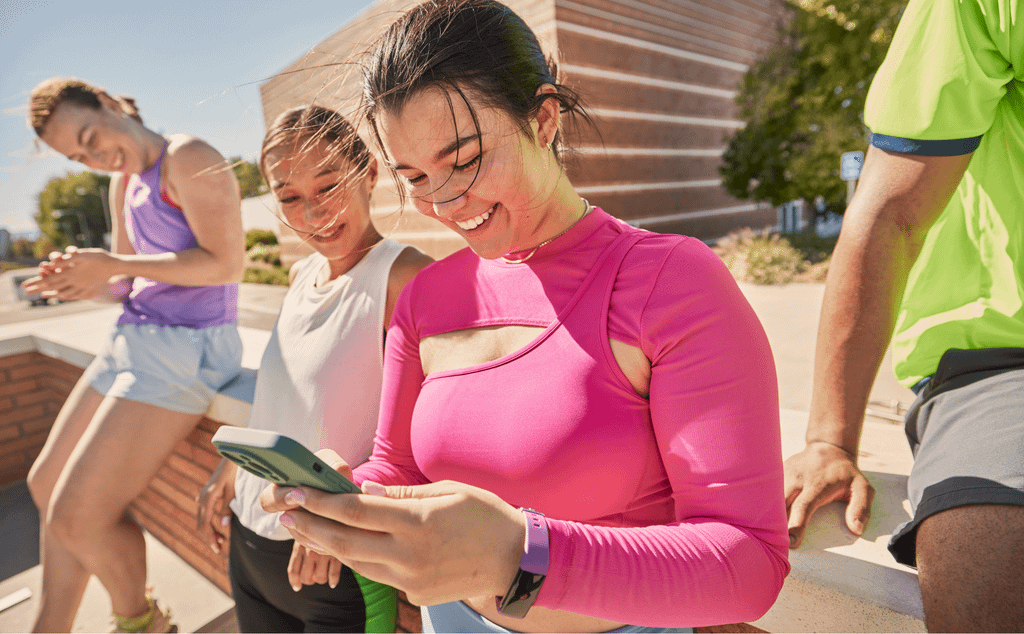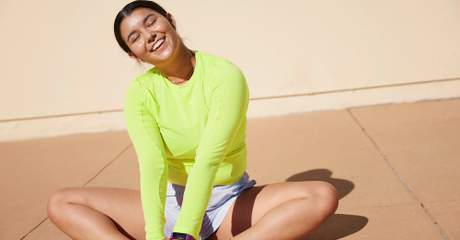Muscle Soreness: Why It Happens and How to Recover With Care
Last Updated Jul 3, 2025

You crush your workout. Maybe you power through a high-intensity interval session or finally try that advanced strength class. At first, you feel unstoppable.
Then the soreness hits.
Suddenly, walking up stairs feels like scaling a mountain. Getting out of bed? That’s a full-body challenge. You’re not imagining it — nearly two out of three Americans deal with muscle soreness after exercising, according to research by the Almond Board of California.
The upside? With the right recovery habits, you can ease the ache, bounce back faster, and stay on track with your fitness goals.
Unlock the secrets to faster recovery and feel stronger every time you move.
What Causes Muscle Soreness?
Soreness after a workout comes from tiny tears in your muscles—not lactic acid.
When you push your body with heavy lifts, new movements, or longer sessions than usual, you create small tears in your muscle fibers. That might sound alarming, but it’s actually a good thing. These microtears trigger your body’s natural inflammatory response, which kicks off the healing process.
As your body repairs the damage, it builds your muscles back stronger and more resilient. That process—called delayed onset muscle soreness (DOMS)—is what makes you feel a little tender the day or two after a workout. This recovery period is when the real muscle growth happens, according to University Hospitals.
So if you're feeling sore, it means your body is rebuilding and getting stronger. Just make sure to support it with proper rest and recovery.
Wait—What About Lactic Acid?
Great question. Lactic acid does show up during high-intensity workouts, like sprinting or heavy lifting. That’s because when your muscles don’t get oxygen fast enough, they switch to anaerobic metabolism, which produces lactic acid as a byproduct.
But here’s the key: lactic acid isn’t what causes muscle soreness. That’s a common myth. A study published in The Physician and Sportsmedicine found that lactic acid clears from your system pretty quickly. It’s not what makes your legs ache after leg day—it’s those microscopic tears doing their (very important) job.
Delayed Onset Muscle Soreness (DOMS)
That ache you feel a day or two after a tough workout? That’s delayed-onset muscle soreness (DOMS). It usually shows up 12 to 24 hours after exercise and can last up to five to seven days. And while it might feel a little uncomfortable, it’s totally normal—and part of how your body gets stronger.
You might notice:
- Muscle stiffness that makes it harder to move through your usual range of motion
- Tenderness when you touch or stretch the sore area
- Mild swelling around the muscle (in some cases)
- Temporary strength loss or muscle fatigue
These symptoms usually peak between 24 and 72 hours after your workout before gradually fading.
What Causes It?
Any intense workout can lead to DOMS—but one type of movement is especially known for it: eccentric exercise.
Eccentric movements happen when your muscles lengthen while under tension. Think: lowering into a push-up or running downhill. These motions place controlled stress on the muscle, which leads to small tears—and, eventually, to muscle growth and improved strength.
So while DOMS can feel like a setback, it’s actually a sign your body is adapting to become more powerful and resilient. Just give it the rest and recovery it needs to rebuild.
Is Muscle Soreness a Sign of a Good Workout?
Some people believe that if they aren't sore after an exercise, they aren't working hard enough. That may not always be true.
When you try a new workout or push your limits, you’ll most likely experience muscle soreness. But if you keep working out and get used to the routine over time, you won’t feel the pain anymore.
And that doesn’t necessarily mean your training is no longer effective. It just means that your muscles have gotten used to your regular fitness schedule and have become more powerful at handling the workload.
While soreness may indicate that you've worked your muscles, you don’t need to be sore to stay fit, according to an article by The Guardian. In fact, always aiming for soreness can become more harmful than helpful. Excessive soreness is counterproductive. It makes it difficult to exercise through the pain and may increase your risk for injuries.
Instead of using soreness to measure success, look for these signs you’re making progress:
- You can lift heavier weights or do more reps
- You feel stronger or more stable in your movements
- You’re building endurance and recovering faster
Feeling sore can be part of your fitness journey—but it doesn’t need to be the goal. Strength, consistency, and recovery? Those are what take you further.
Differentiating Muscle Soreness From Injury
Muscle soreness is part of getting stronger—but not all pain is created equal. Sometimes, what feels like post-workout soreness could actually be a sign of injury. Knowing the difference helps you respond early and avoid making things worse.
Here’s a quick guide to help you tell them apart muscle soreness vs. injury:
Characteristic | Soreness | Injury |
| When it begins | A mild muscle ache sets in about 12 to 24 hours after a difficult physical activity | A sharp, intense pain during or after intense activities |
| What it indicates | Part of a natural process of muscle repair and growth | Sign of an underlying issue that requires medical attention |
| Healing over time | Soreness reduces | Pain may worsen without treatment |
| Swelling and bruising | Rare | Very likely |
| How long does it last? | Five to seven days | May last longer without treatment |
When To Seek Medical Advice
Generally, delayed onset muscle soreness doesn’t need medical attention. But if you're too sore — such that your mobility is severely limited or DOMS is getting in the way of your daily activities — it’s best to talk to a doctor.
According to North Central Surgical Center Hospital, other instances that need medical attention include:
- You feel sharp, severe pain during or after an exercise.
- The pain in your muscles doesn’t go away (usually after seven days) and is worsening over time.
- You notice swelling or bruising on your muscles.
Tips for Relieving Muscle Soreness
Feeling sore after a tough workout? That’s your body’s way of saying it’s repairing and rebuilding. Luckily, there are several ways to support your recovery and ease that post-workout ache.
One of the most effective strategies is to scale back your routine for a few days. Giving your body space to recover helps your muscles heal and come back stronger. Need a little help slowing down? Wellness apps like Headspace offer guided mindfulness practices that support rest, recovery, and relaxation.
But rest isn’t your only tool. Here are a few more ways to soothe sore muscles and speed up recovery:
- Active recovery
- Balanced nutrition
- Sufficient hydration
- Massage and foam rolling
Tip 1: Use of Active Recovery
Sometimes the best thing you can do for sore muscles is to keep moving—gently. Active recovery involves light, low-impact movement after intense workouts. It boosts circulation, flushes out waste from muscle tissue, and delivers nutrients that support healing.
In fact, a study in the National Library of Medicine found that active recovery is one of the most effective techniques for easing delayed-onset muscle soreness (DOMS).
Here are a few go-to recovery moves:
- Yoga
- Light walking
- Static or dynamic stretches
Want some help getting started? Subscription platforms like Apple Fitness+ offer guided cooldowns and recovery flows that make it easy to stay consistent.
Tip 2: Eat a Well-Rounded Diet
High-intensity workouts deplete your energy and break down muscle tissue. A balanced post-workout meal helps restore nutrients and rebuild stronger muscles.
- Proteins: Provides essential amino acids necessary for repairing muscle damage
- Carbohydrates: Replenishes energy stores
- Healthy fats: Helps in reducing inflammation during the muscle repair process
A macro calculator can help you determine how many grams of each macronutrient you should eat daily, depending on age, weight, height, workout level, and wellness goals.
Tip 3: Stay Hydrated
Hydration plays a major role in muscle function and recovery. Replacing fluids—especially after a sweaty workout—helps your body flush out toxins, regulate temperature, and reduce soreness.
Not drinking enough before or after exercise can slow recovery and increase muscle damage, According to research from the Gatorade Sports Science Institute.
Here’s a simple rule: for every pound of weight lost during exercise, drink 16 to 24 ounces of fluid. And don’t forget to replenish electrolytes if your workout was long or intense!
Tip 4: Take Advantage of Massage and Foam Rolling
Massage is a powerful recover tool. Research published in the National Library of Medicine shows that massage is one of the most effective ways to educe muscle soreness and fatigue, while also improving flexibility and circulation.
You don’t need a professional appointment to get the benefits. Try this at home:
- Apply light pressure to the sore area using your hands or a foam roller
- Use a bit of oil or lotion to reduce friction
- Move slowly and breathe deeply to encourage muscle relaxation
Regular self-massage or foam rolling can make recovery feel just as rewarding as the workout itself.
Can You Prevent Muscle Soreness?
Because delayed-onset muscle soreness (DOMS) is part of how your body repairs and grows after exercise, you might not be able to avoid it entirely—especially after trying something new or pushing your limits. But the good news? You can take steps to reduce how sore you feel and recover more comfortably.
Here are a few ways to help minimize soreness:
- Stay hydrated. Drinking plenty of fluids helps your muscles recover and keeps your body functioning at its best.
- Warm up and cool down. Start your workout with dynamic stretches to prepare your body for movement. Finish with static stretches to support muscle relaxation and repair.
- Take breaks when you need them. Apps like Trainiac offer trainer-backed coaching that helps you listen to your body, pace your workouts, and schedule rest intentionally—right when your muscles need it most.
You don’t have to stop moving just because you’re sore. In fact, light movement can help ease discomfort by boosting blood flow and supporting recovery. But if the soreness is intense enough that it’s hard to move a specific area, that’s your cue to rest. Recovery is where strength is built—so don’t skip it.
Recovery Isn’t a Setback — It’s a Vital Part of Feeling Your Best
Taking time to rest or adjust your workouts isn’t a setback. It’s how your body rebuilds, your muscles grow, and your strength increases over time.
Wellhub supports every part of your fitness journey—including recovery. With access to partners like Apple Fitness+, Headspace, and Trainiac, you can build smart routines that balance effort and rest, helping you stay consistent for the long haul.
You might already have Wellhub through your employee benefits. Check here to see if you’re eligible and start using tools that support your progress—on active days and rest days alike. If not, start a petition to bring Wellhub to your company.

Want Wellhub at your company? Start a petition.
It’s completely confidential! Just follow a few steps and we'll create your official company petition page.
References:
- Aggeler, M. (2025, April 29). Is Muscle Soreness After a Workout Good or Bad?. The Guardian. Retrieved on June 4, 2025, from https://www.theguardian.com/wellness/2025/apr/29/soreness-after-workout-good-or-bad
- Bean, A. Recovery nutrition: What to Eat After a Workout. Association for Nutrition. Retrieved on June 4, 2025, from https://www.associationfornutrition.org/wp-content/uploads/2020/06/Recovery-nutrition-by-Anita-Bean.pdf
- Boynton, E. (2022, August 8). How to Reduce Soreness With Active Recovery. Right as Rain by UW Medicine. Retrieved on June 4, 2025, from https://rightasrain.uwmedicine.org/body/exercise/active-recovery
- Diep, S. (2019). DOMS. ScienceDirect. Retrieved on June 4, 2025, from https://www.sciencedirect.com/science/article/pii/S0301562919312736
- Dupuy, O., Douzi, W., Theurot, D., Bosquet, L., & Dugue, B. (2018, April 26). An Evidence-Based Approach for Choosing Post-exercise Recovery Techniques to Reduce Markers of Muscle Damage, Soreness, Fatigue, and Inflammation: A Systematic Review With Meta-Analysis. National Library of Medicine. Retrieved on June 4, 2025, from https://pmc.ncbi.nlm.nih.gov/articles/PMC5932411/
- Eating to Reduce Inflammation. U.S. Department of Veterans Affairs. (2018, July 27). Retrieved on June 4, 2025, from https://www.va.gov/WHOLEHEALTHLIBRARY/docs/EatReduceInflam_508.pdf
- How Microtears Help You to Build Muscle Mass. University Hospitals. (2018, February 5). Retrieved on June 4, 2025, from https://www.uhhospitals.org/blog/articles/2018/02/microtears-and-mass
- How Much Do I Need to Drink After Work or Exercise?. The Department of Homeland Security. Retrieved on June 4, 2025, from https://www.dhs.gov/sites/default/files/publications/21_0929_cbp_scale-hydration-chart.pdf
- Hydration 101: What do I Need to Know?. USADA. (2023, August 15). Retrieved on June 4, 2025, from https://www.usada.org/spirit-of-sport/hydration-101-need-know/
- King, M. A., & Baker, L. B. (2020, August). Dehydration and Exercise-Induced Muscle Damage: Implications for Recovery. Gatorade Sports Science Institute. Retrieved on June 4, 2025, from https://www.gssiweb.org/sports-science-exchange/article/dehydration-and-exercise-induced-muscle-damage-implications-for-recovery
- Schwane, J. A., Watrous, G. G., Johnson, S. R., & Armstrong, R. B. (1983, March 11). Is Lactic Acid Related to Delayed-Onset Muscle Soreness?. National Library of Medicine. Retrieved on June 4, 2025, from https://pubmed.ncbi.nlm.nih.gov/27409551/
- Signs Your Exercise Pain Isn’t Just Muscle Soreness. North Central Surgical Center Hospital. Retrieved on June 4, 2025, from https://northcentralsurgical.com/signs-your-exercise-pain-isnt-just-muscle-soreness/
- Two-Thirds of Americans Report Sore Muscles after Working Out, But Even Fewer Incorporate Recovery. Almond Board of California. (2024, June 11). Retrieved on June 4, 2025, from https://www.almonds.com/about-us/press-room/two-thirds-americans-report-sore-muscles-after-working-out
Category
Share

The Wellhub Editorial Team empowers HR leaders to support worker wellbeing. Our original research, trend analyses, and helpful how-tos provide the tools they need to improve workforce wellness in today's fast-shifting professional landscape.
Subscribe
Our weekly newsletter is your source of education and inspiration to help you create a corporate wellness program that actually matters.
Subscribe
Our weekly newsletter is your source of education and inspiration to help you create a corporate wellness program that actually matters.
You May Also Like

Women Gym Owners And Founders To Celebrate This International Women’s Day | Wellhub
For International Women’s Day, we put the spotlight on women-owned and founded gyms across the country that deserve a moment to shine.

Black-Owned And Founded Fitness And Wellness Businesses To Support
Check out these black-owned and founded gyms, studios, and fitness and wellness companies and the many ways you can support them.

5 Fun Workouts To Spice Up Your Fitness Routine | Wellhub
Here are five fun workouts and studios to shake up your circuit and keep your fitness routine from falling into an exercise rut.